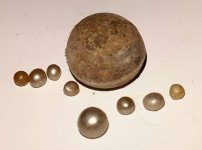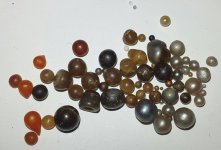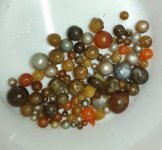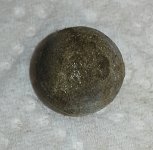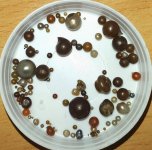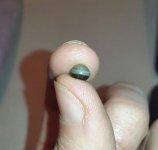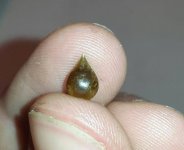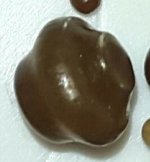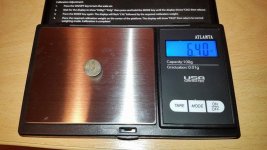The pearls are stored in little white boxes. My grandpa gave me another one, he said that whenever I come visit him, he will give me another box of pearls. Now my curiosity for pearls has awakened. I love the way they look like and it makes me wonder, how might the other pearls look like. The variety in shapes, colors and sizes is huge. This time I even got some which are half silver and half brown. I don't know if this makes them more valuable or not but for me this is special.
I will buy a precision scale to find out how much they weigh, maybe somebody could give me more information about the value. Im don't know much about pearl's, so I don't know what medium value means.
Look at the last photo, can somebody explain how this symetric shape is possible? The brown ones have often interesting symetric shapes. The amber ones are often shaped like a teardrop and the silver ones are mostly round. But there are no teardrop shaped brown pearls and no symetric amber pearls, why?
These are good questions, because wonder is one of the greatest attributes of natural pearl collection. There are dozens of ways pearls can form, even within the same specimens. In pen shells, it takes about 4 years to become nacreous in the surface structure. The silver pearls would have to be at least that age, even though they're smaller. The location of pearl matters, because in the mantle skirts (for example) natural pearls develop flat spots laying near the shell. Other pearls develop within other tissues, spaces or ducts and create "shadows" distal to the heart. This is often how teardrops form. Some pearls can rotate within the sac, producing ringed effects.
This is why pearls from pen shells are interesting and seeing entire lots like these support their origin. Once high graded and assembled into finished pieces, natural pearls can be difficult to accurately identify.
As to value. There is no fixed standard for natural pearl value. In any natural pearl collection there will be a broad mix of quality, size and shape. The greatest part of any harvest normally involves a high percentage of seed pearls. Sometimes upwards of 90% or more in some species. The remainder will have more value, but only a few will be outstanding gem quality.
What you need to do is this... Find the nicest pearl in the lot. Pick one that's not cracked, large, symmetrical and nacreous. When you have one terrific pearl, it's much easier to find a value. Look around the net, ask us or whatever you need to do to arrive at what you'd believe to be a fair price at auction. Once you have a ball park figure, use that as your standard for the remaining lot. The worst pearl will be one dollar and your best pearl will be X dollars. Then you can grade accordingly. If a pearl is much alike another, but say, less round... it's half the value. Try looking at your lot both ways. Match some sets, apply premium prices and arrive at total value and the effort needed to do it. Think of a flat rate for the entire lot, then compare the two. Only you can decide which is better. We can only help at arriving at your own decision.
The reason I suggest "medium" value is because pearls from pen shells are not considered premium quality for many reasons. Even the best pearls in the lot will likely not parallel the quality of other pterioid or pteriomorph mollusks. That said, they are superior to pearls from heterodonta or other calcareous mollusks.
It's a difficult decision to sell pearls individually or by the lot. Once high graded, the remaining lot's value drops significantly. Likewise wholesalers need to be profitable, lest they get caught holding the bag for otherwise unmarketable pearls. A great part of the cost of manufacturing is precious metal, design and marketing. These must be overcome before profits are realized.
As these pearls are gifted, you have the advantage of not applying your costs in harvesting them. It's reasonable to apply some value for provenance, because the buyer will often delight in knowing the history of the piece. In this day and age, a bargain moves better than a premium
A good price is any price that satisfies the buyer and the seller at the same time.
